On Call Hollow Road, in the Pomona/Stony Point area about 25 miles north of the city, there is a trail that leads off into the woods.
Follow the trail in, and you’ll quickly find yourself surrounded on all sides by towering trees.
A few minutes up the trail, just after you cross over a small brook, the trees will suddenly open into a clearing…
…and you’ll come to a cemetery.
There’s something particularly unusual about this cemetery…
There are almost no gravestones. Instead, the cemetery is filled with small, gray, t-shaped markers:
There are literally hundreds and hundreds of these markers, each with its own unique number…
…and they seem to stretch on…
…and on…
…and on.
Why bury people with numbers instead of names? Because they were never meant to be remembered. This is the graveyard of a mental asylum.
I came across the Old Letchworth Village Cemetery completely by accident last week when I happened to spot this sign at the north end of Call Hollow Road and followed the trail in.
Letchworth Village was founded in 1911 as a “state institution for the segregation of the epileptic and feeble-minded” – essentially, a place for those with any number of what were considered mental disorders at the time.
A progressive form of treatment for the era, patients essentially lived and worked on a 2,362-acre working farm, tending crops and livestock. Unfortunately, significant overcrowding and widespread mistreatment made this a less than ideal community, and things only worsened as the years passed on.
Today, the entire complex sits in a state of abandonment.
The institution’s cemetery is located about a half mile away in the woods, and contains around 900 burials dating from 1917 to 1967.
There are a few actual headstones, all sharing a frighteningly common trait: a very early death.
In fact, from the headstones that exist, dying in your early 20s seemed to have been quite common at Letchworth:
In recent years, a serious effort has been made to dig through old hospital records to determine who was buried here…
…and a large bronze plaque can now be found at the front of the cemetery identifying about 900 or so, although not by plot number.
Sadly, many entries are denoted simply as “Baby Boy” or “Baby Girl” followed by a surname. A large percentage of Letchworth’s patient intake were children, many abandoned by families not willing to care for them. Presumably, others were born at Letchworth but didn’t survive.
Today, only a handful of graves show signs of active remembrance.
I noticed a few old holiday decorations placed about the grounds…
…but otherwise, the cemetery feels completely cut-off from the outside world.
The Old Letchworth Village Cemetery is one of the most haunting graveyards I’ve ever been to. Beyond its feeling of isolation, the cold anonymity of the endless rows of numbered markers serves as a perpetual reminder that, in death as in life, these were people considered not even worthy of a name or date of birth. They were problems, to be numbered and hidden away beyond the trees where no one could be bothered by them.
And here they’ll remain forever.
-SCOUT
PS – I’m long overdue for a full post on Letchworth. Keep an eye out for it soon…
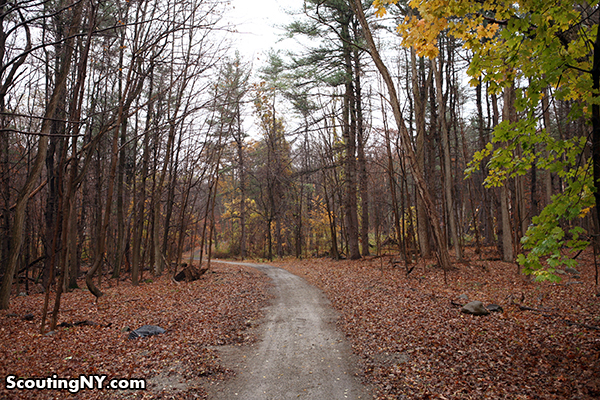
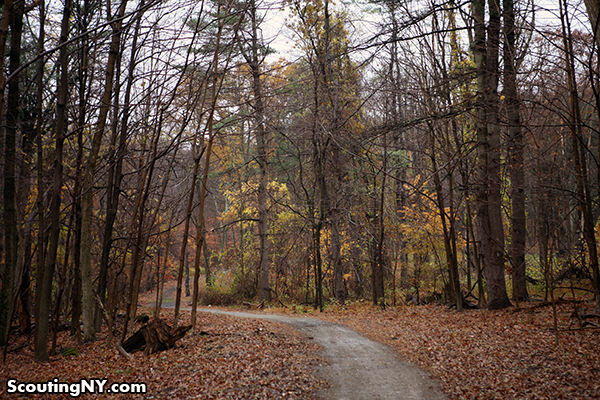
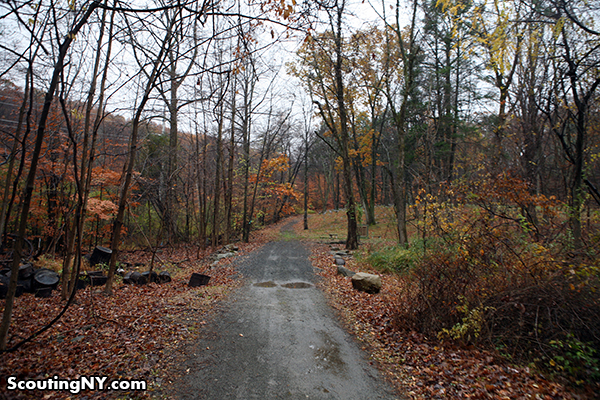
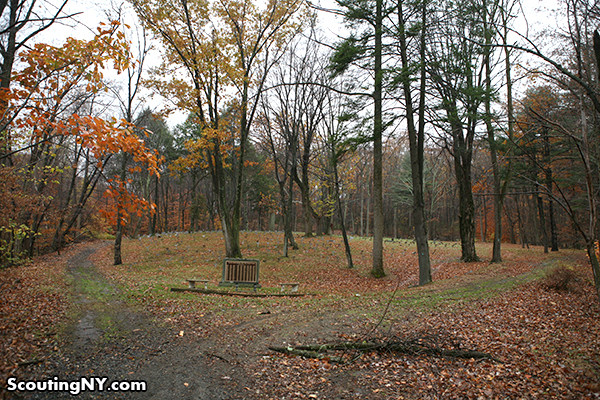
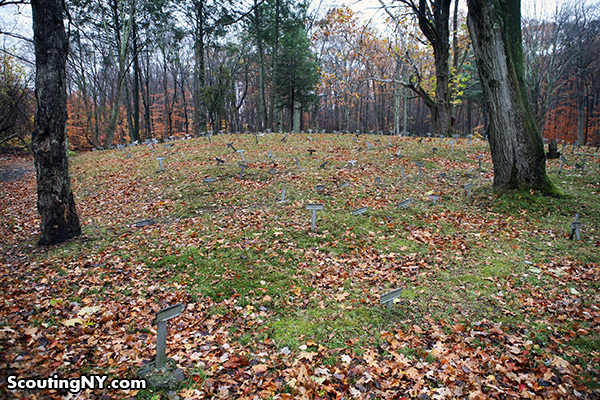
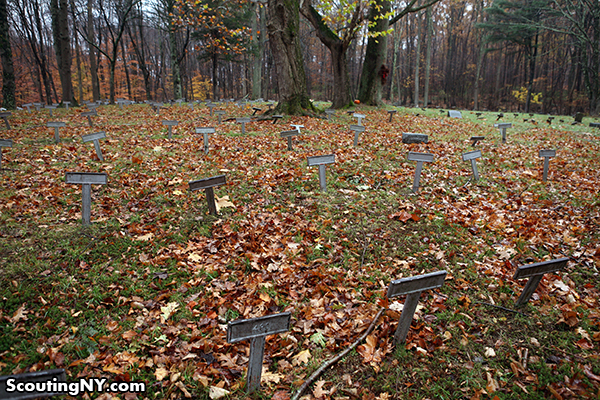

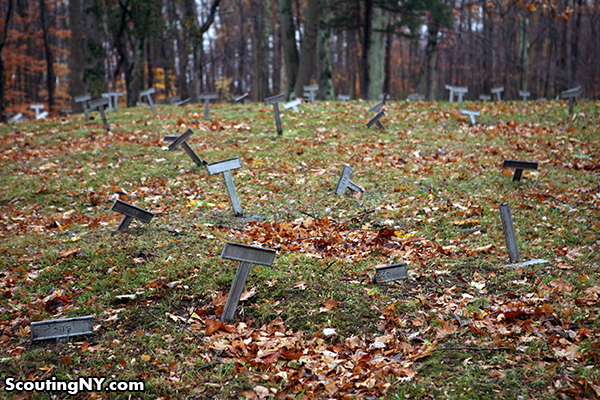
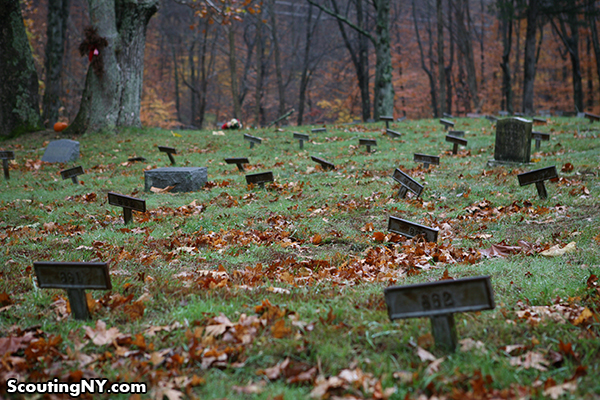

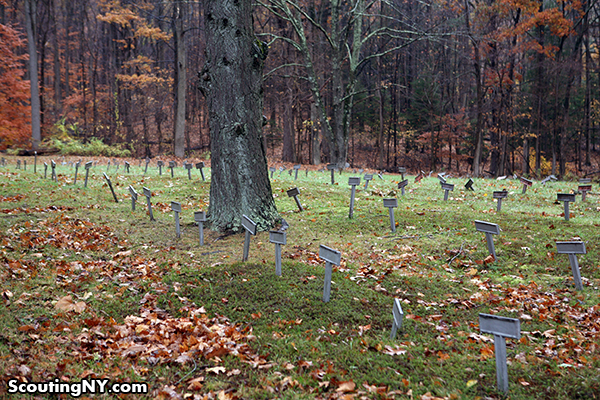

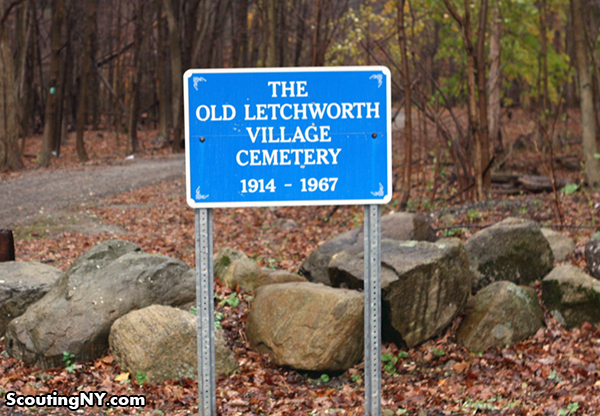
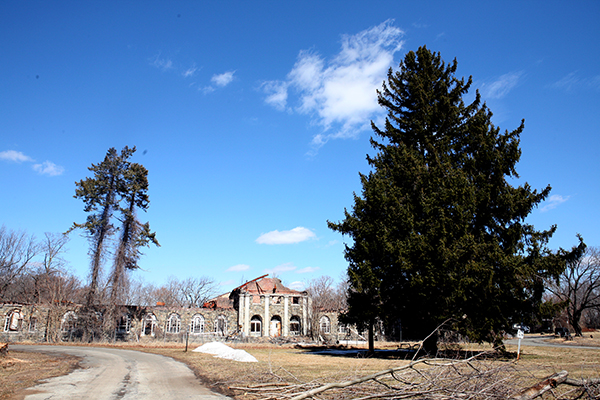
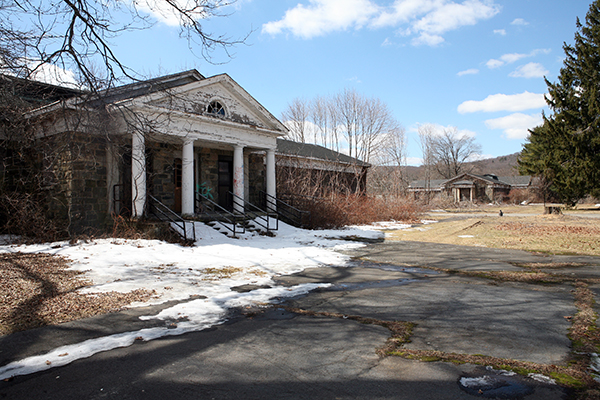



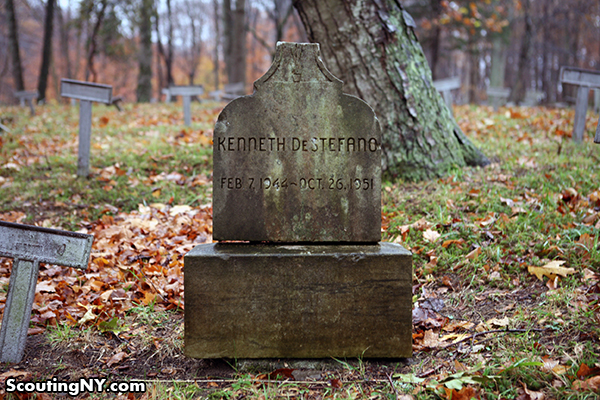
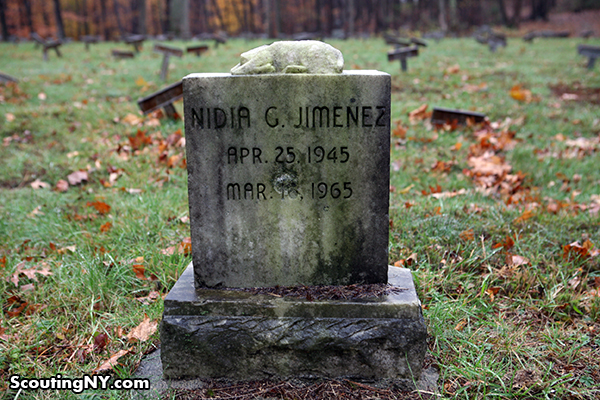

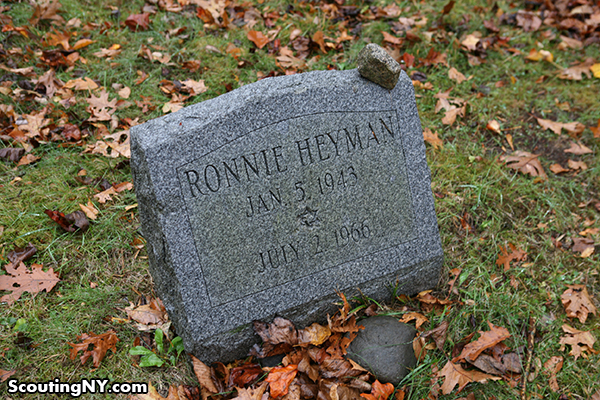
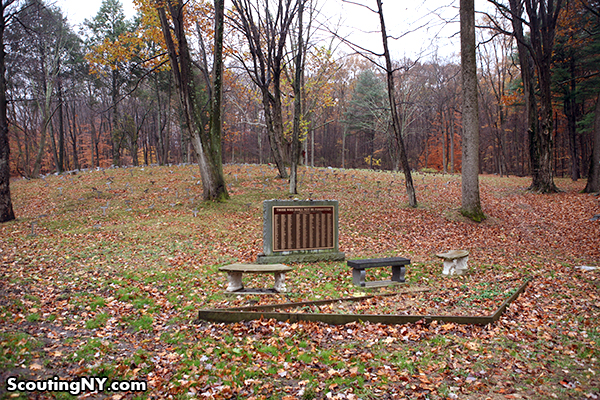

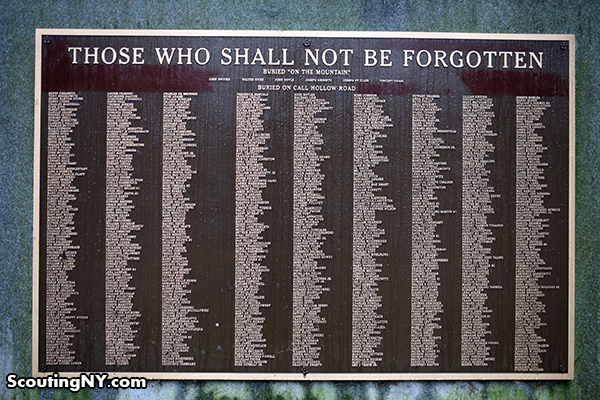


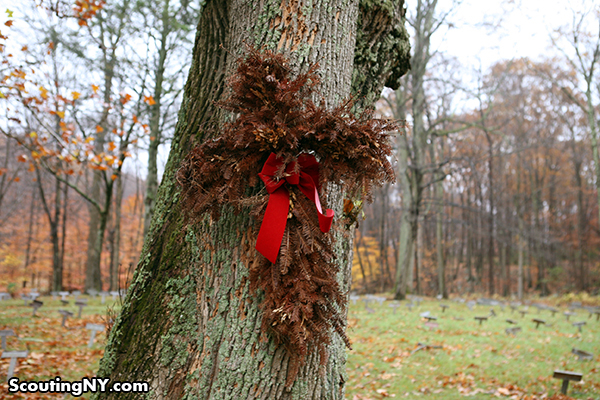

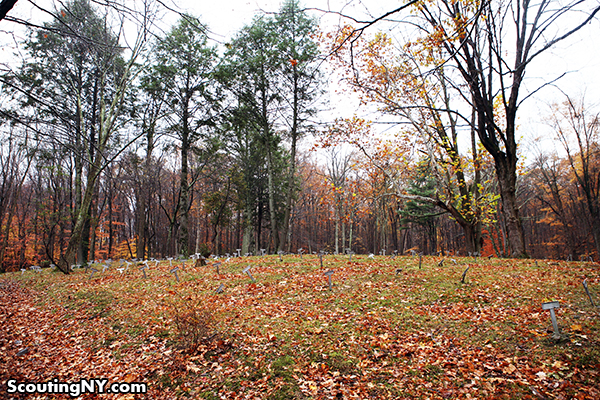

A very poignant post.
rileyo, DITTO
Is the cemetery closed off or can the public go and see it for themselves?
Hi,
Great pictures, and a story definitely worth pursuing. Just to clarify one point…Letchworth was for those individuals with developmental disabilities. Individuals with serious mental illness went to other hospitals, such as Rockland State Hospital (later called Rockland Psychiatric).
Love reading your posts!
Kathy
In the early days of Letchworth there were many normals as they called it. People who were not mentally deficient. A stroke of a pen by a judge would end you up at Letchworth for a life time. I know of several that lived out their lives there that were not deficient. One woman killed her abusive husband, a young girl wasnt wanted by her stepfather, another a young boy acting out when his mother died. Lots of wards of the state ended up here.
This was a childrens asylum not a mental asylum.
There are 940 graves and 6 that are buried in unmarked graves on another road close by are included in this memorial at the top of the plaque
Really beautiful and moving post.
So sad :'(
I’ve bookmarked this post. It is officially in one of my top three favorites from your site. There is nothing you can’t uncover! I’m not a big reality tv fan but if they made a show on your adventures and discoveries…well….I wouldn’t miss an episode!
What a great idea. I wouldn’t miss it either.
Several Letchworth patients were the first humans to be given the polio vaccine.
Letchworth had scientest and researchers living on the grounds and at the time a signed consent was not the way things were done. Ward of the courts and prisoners were often used for research material.
40 states allowed trial studies as they called them, through the 40’s, 50′ and it could have gone as far back as the 30’s.
The Hepatitis vaccine was the vaccine used at Letchworth. I am very informed about Letchworth. Have researched and talked to past case managers. You can find a lot on the web. before you suggest or state anything about this facility I would look for facts.
There was a large over flow from Willard. So many were just juv. deliquent, not mentally deficient. Of course and some just did not have families willing to take care of them even though they were ” Normals”. many orphanages the children were not orphans they had families that for whatever reason could not take care of the children. Sometimes and many times the case was a parent died and the other could not support or take care of the children or child.
I just stumbled on this info while watching TV. My husband was born there in 1947 on his birth certificate it says he is the second registered birth of that year. My understanding is that his “family” spent a lot of money trying to get his mother out while another “family” spent a lot trying to keep her in. What ever the case there was another child born in 1938 we would like to find out how to locate that child.
Let me preface this by saying I love your work and your site…
That being said, I think you’re being a little hard on the families that must’ve believed they were leaving their loved ones in the best of care. That coupled with (what can be called nothing less than) ignorance about what the “issue” was.
It’s really nice to see that some families have kept up with their loved ones and visit. In one of your pictures, you can clearly see a rock left on top of the headstone. Also, the state (or whomever owns the land) keeps it neat and manicured.
Great find, great job and thank you for sharing your adventures/finds with us.
Families who felt they were leaving their loved ones in good care? You mean the families that allowed their love ones to be buried with a number rather then a name? OK, I have got your drift.
The date of birth on the monuments we could read indicated 1943 and 1945. I think it’s important to consider that this was a different time. We were in the middle of WWII, men went off to war and most women had to work to support family and the war effort. Also, basic necessities were sometimes rationed. I’m sure that most families were in a really bad way and caring for a special needs child was impossible.
I wish to address the numbering of the graves, which may seem cruel, but was actually meant out of the deepest respect. I have a severely developmentally disabled aunt who lived in a similar institution until it closed before I was born. The names in the cemeteries of these institutions were concealed so that families would not be harassed, and names of the deceased residents of the hospital would not be thrown around and mocked.
The hospital, especially while active, would have had detailed written records of the cemetery layout. Because mental retardation has known genetic causes, it was likely easier to publicize the names of the deceased here than for similar cemeteries at hospitals for the mentally ill.
Michael you made a good point. Mental illness still has stigma today. Can’t imagine what it was like back then.
It’s hard to tell exactly when but Ronnie Heyman had a visitor at some recent point. That rock on his stone signifies a visitor to the gravesite. This is done in Jewish tradition.
Great post. But it somehow leaves me uneasy, thinking how much suffering by those there burried, when mental illness was ackwardly, and may times brutally treated.
You should check out the old Central Islip State Hospital potterfield located close to The Long Island Ducks stadium and behind Toro College. Theres even a seperate Jewish section and even though its not too well known its well taken care of. As well as check out the Kings Park Psychiatric Center pottersfield. Eerie depressing sad and lonely.
Man any locatoin from Pilgrim Or KPPC would be a great movie location. Even some of Central Islip SH still remains like the sunburst building.
I’ve been here a few dozen times, if you get the chance check out the medical building on the Letchworth grounds. There have been a few low budget horror films filmed there too.
I am moved beyond words, my heart weeps.
It is entirely possible that poor treatment was *not* the reason why so many Letchworth patients died young. Down Syndrome probably was the most common cause for admission, and people with that condition often have serious heart defects that can be fatal at a young age unless treated. Prior to development of modern surgical procedures in the 1950’s and 1960’s there wasn’t much that could be done.
That is an excellent point! I was trying to figure out what common affliction would cause that and you are completely right.
This is very interesting. I’m from a town called letchworth in herts uk. There’s a famous mental asylum there that was torn down called fairfields infamous for the stories
This is actually the cemetery of an instituion for people with intellectual disabilities, not a “mental asylum,” but the records of the people buried there are governed by the same law that the NYS Office of Mental Health is currently citing in its refusal to allow the names of people buried at Willard State Hospital to be used. A local group wants to honor Lawrence Mocha, the unpaid patient gravedigger, along with almost 6,000 other buried there anonymously, but the Office of Menta Health refuses based on “confidentiality.” Yet someone was allowed to place a plaque with the names of 900 people buried at Letchworth – I wonder why the double standard?
This graveyard was abandoned and a dump site for awhile. A condo of sorts was going to be built on the grounds. I was concerned and called the New York Times. The had already done a write up in the 90’s and said they would send out another reporter. A ombudsman was in the process of matching the names with the numbers and the clean up began. I was invited to meet this wonderful woman and the cemetery has been restored to a place of reverence.
The Times recently got there:
http://www.nytimes.com/2014/11/28/us/restoring-lost-names-recapturing-lost-dignity.html?hp&action=click&pgtype=Homepage&module=second-column-region®ion=top-news&WT.nav=top-news&_r=0
Joy,
Darby made a good point that the OMH governs the same law that the NYS Office of Mental Health does. WHY would Letchworth Village Cemetery have been able to place the names on a marker when we at Willard Cemetery cannot remember any of the people without family permission. I heard that Senator Thomas Morahan was able to get legislation passed while he was chair of the Senate Mental Health and Developmental Disabilities that gave permission for that memorial. Do you know anything about that I know that Jacqueline Ferrara was the ombudsman during that time for the Hudson Valley DDSO. Do you know anything about that legislation???? We have had legislation introduced since 2011 to get permission at Willard to memorialize the 6,000 buried there with no name. If you have any of this information PLEASE email me at cspellecy@rochester.rr.com.
I recently visited a newly formed mental state museum in Salem, Oregon. I wonder if they too have their own special graveyard. I may have to do some digging on that! The photos and story above is very haunting and sad. It makes me cry to know that people were treated as numbers. May they all rest in peace and that they are now God’s angels.
I can remember as a child riding in the car with my parents and grandmother through Letchworth, looking to see if we could see/ find my grandmother’s family. She knew what building they were in, so my father would drive up and down the road a few times scanning the grounds to see if my grandmother could find them. Days that she did get a glimpse of a family member she was very excited at first, then would cry all the way home. Wondering how they were, if they were okay, how they were being treated etc. my grandmother said that we had a lot of family there, because my grandmother and grandfather famiies were huge and with that many children (12+) in one family they could not afford to support them. So some of these normal children grew up in a abnormal life style just so they were taken care of. Well I could go on and on but I’ll stop here. May they all rest in peace.
Laurie a lot of normals were sent to Letchworth. I know two stories and now yours that tell me this was true. A lot was from overflows from other institutions. God Bless them and you. Institutions like these are very near and dear to my heart. I know the feeling of abandonment and abuse at a institution so when i researched and visited Letchworth I did so for many years before speculating about the place. Would love to connect.
Hi Joy
My mom s sister died at Letchworth in 1957. She was separated from her 5 siblings (Mary, Irene, Agnes, Albert and Harry) who were in the foster care system in NYC after their mother died. Her name was Margaret Haake. The story goes that she was placed in numerous homes with her sister Irene and aftercare 16th birthday, she was sent to Letchworth. My Aunt Irene does not remember her having any emotional issues. She died there at the age of 25. I found her name on the bronze wall today. I hope that I can match her marker number with her death certificate.
Why did everyone die in their 20s as per the limited gravestones I saw in the cemetery? Even my aunt died at 25. In theory, it seemed like Letchworth might have worked for certain psychological illnesses, the reality is different. It seems like foster care was a big problem with neglect and abuse and many young children and young women ended up there as a last resort when foster care did not workout. Any information would be helpful.
Hello Darcy, some lived till they were quite old a few died young. A lot of research went on at Letchworth so I dont know what reason Irene passed. Foster care for me was wonderful had loving foster parents then went into a institution. Many times Letchworth was the first choice. A lot of deliquent kids, abandoned kids all normals ended up there amidst the mentally ill or brain damaged kids. Let me look into this. I remember a story about a Irene may not be the same one. I am on facebook with photos of trips to Letchworth. Are you on FB?
Hi Joy
A worker for the county of Rockland that I met at Letchworth Cemetary was able to find out
more detailed information for me regarding the death of my aunt at Letchworth. He located a card that he found that indicated Margaret Haake entered on March 22, 1950 and died on July 4th 1966. She was 34 when she passed. I find it even more curious that she died of pneumonia at age 34 in 1966. Is there a place where old Lechtworth files can be reviewed by family members? Do you know how we could find out if she was an employee at the facility?
Any information helps us.
Darcy
My parents won a bid to install weather stripping on several Letchworth Buildings. Although I was only 15 years old at the time, my parents asked me to take measurements of the windows in the woman’s ward because they didn’t have a female employee that could do it. When I walked into that building I was nauseated by the stench of urine and feces. The ward was very impersonal, cold and sparsely furnished. As soon as the residents saw me, they rushed over to me. They ranged in age from the very young to the very old. Most were very unkempt and many were partially or completely nude. They kept trying to touch my hair and my face and my clothes. Many started crying and several were calling me “Mamma, mamma!” It was one of the most disturbing incidents in my life. This was a human warehouse for throw-away people. Maybe some of the families were ignorant but it would be very difficult to visit that place and not know that these poor souls were being neglected and abused.
A big turn of events happened in many of the institutions in the 60=70s over crowding was horrific. Rivera a news reporter brought in a film crew in the 70’s and exposed Letchworth and Willowbrook. It wasnt long after that when the residents were sent to group homes. The place just became abandoned. In the 30’s and 40′ maybe even into the 50’s the treatment was better. There are photographs in the adminstration building taken by a famous photographer that was suppose to show a more human and caring institution. The world renown photographer was never proud of these photos and never showed them for public viewing. I think she knew then it was staged.
After the big news story came out about Letchworth Village my high school (Fox Lane, in Bedford, NY) arranged a couple of buses of volunteers to spend a day cleaning there and I went. I think it was 1970 or 71. My experience was very similar to Mary Hoehmann’s. The nauseating smell was the first assault on my senses. When I first entered, I was surrounded by filthy, drooling patients who could not speak but wanted to touch and stroke me. It took a while choking back tears before I could find the wherewithall to start working after seeing the shocking condition these people were in. Benches lined the walls and there were a number of patients sitting on them, rocking, endlessly self-pleasuring. The grunts and squeals from this semi-mobile group were the second sensual assault. The area we cleaned was a huge room with the fore-mentioned benches around the walls and the center of the floor filled with large cribs, in which non-ambulatory patients lay. I particularly remember seeing – and smelling – bed sores for the first time among this population. They seemed totally non-responsive to stimuli. The staff there seemed pretty aloof and clustered near the front of the room where there were desks. I don’t recall any staff engaging with patients – or with any of us teen-aged volunteers – during the several hours we were there. We cleaned the surfaces of things: the cribs, walls, window sills and windows. But I don’t remember much about the thing we actually went there to do…I mostly remember sickening feeling in the pit of my stomach, the smells, wordless voices, and the terribly sad, empty faces of the patients we encountered. As you can imagine, our bus ride back to school was very quiet. I remember that my family went out to dinner that night but I could not eat. It took several days for my appetite to return.
I couldn’t even imagine what that must of been like for a teenager to experience. I am sure it is one of those memories that haunt you. God bless you both for doing things others should have done. I am sorry you had to endure that in your young years. I also feel sorry for those that had been left there to live out their lives in a horrible sounding place!
Here in my state we had places like this Thank God time have changed.When they started moving the pt’s form the state mental hosipal some them were sent to local nursing homes. I worked in one of the NH could not beleive the condition these people were in. Broke Your Heart.
I have been trying to find my evidence about what happened to my uncle. He was born in 1945 with Down’s syndrome. Me great grand parents took him away from my grand mother when he was just a baby and put him in a home were he apparently died at 5 during a heat wave. If someone either has a clear copy of the names from the cemetery or a list of the names they could post, I would so appreciate it. He deserves to be remembered..
These grounds were known locally as “Mikey’s Grave.” Sadly, it often served as a place for high schoolers to drink back in the 1970’s and 80’s.
I don’t see it in the pictures, but back then there was a large metal grave marker that had the name “Mikey” burned into it by a welding torch. Legend had it that a person who lived in the woods was fond of one of the people committed to Letchworth and when Mikey passed away, the woodsman honored him with this grave marker.
Entering the grounds at night can be a scary experience as headlights illuminate the numbered grave markers.
HI my granduncle, Willie Spring was listed as a resident of Letchworth Village on the 1940 US Census. This is when the family lost track of him. Does anyone have a transcript of the stone with the list of dead? I would greatly appreciate it.
Cindy I will look for the photo and get it to you.
Cindy I am on fb and have a album there. I will look for the photos.